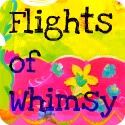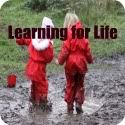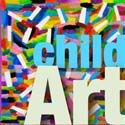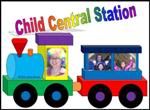Every year we provide our children with the opportunity to observe at first hand, the life cycle of the frog. Vicky, a staff member at our preschool, has a pond on her property that becomes teaming with tadpoles every spring. So, she scoops out an ice-cream container of these wiggly little fellows, and brings them in for us to raise.
This is an experience that I would recommend to all teachers out there to give a try. The children absolutely LOVE it!
The excitement shown as each stage of development is reached is just wonderful!
“Karen, Karen… come and look, one has his back legs!”
“They’ve got their legs, they’ve got their legs!”
“Look, look! A frog!”
If you don’t have access to tadpoles, or even if you do, but just want information on how to care for your tadpoles, check out this site: AMPHIBIAN RESEARCH CENTRE. You will find PDF’s on how to care for tadpoles and frogs on this site and you can also order a “Tadpole Kit” for your centre. The ARC is located in Werribee (Melbourne, Australia) and you do have to pick the kits up yourself.
There are some very important rules to remember:
- Don’t clean the tank, rocks or gravel with anything BUT water and a paper towel.
- Don’t spray or use chemicals anywhere near the tank.
- Clean the tank water out once a week.
- Don’t over feed (if the water goes milky, you are over feeding! Clean immediately!).
Tadpoles don’t eat fish food! They are herbivores! The simplest source of food is frozen pieces of lettuce leaves (the iceberg variety). When you freeze lettuce, the cells in the leaves burst, so when it is placed in the tank and defrosts, the leaves becomes limp and slimy in texture. Tadpoles love it!
Now this is a healthy looking tadpole!
It can take a little while for the back legs to appear…
… and then the front legs…
… but the tail is absorbed very rapidly, almost over-night!
Then, you should have a happy, healthy, frog.
If you would like to keep your frog for a bit longer, you will need to check out the ARC site again, to read up on caring for your frog. You will need to make some changes to the tank habitat and organize some food for your little fellow. He is now a carnivore and likes to eat ‘live insects’! You can order frog food from here. We are hoping to receive a delivery of one day old crickets tomorrow! 1,500 of them actually!
I believe if we want to raise children to have a love and respect for the natural environment, we have to allow them opportunities to connect with it, and experience it first hand. To directly observe it’s wonders unfold.
You cannot grow to ‘love’ something that you have never had a relationship with.
So, go on, give it a go, your children will love it!
You can read more about opportunities to introduce animals into the preschool environment by clicking on “Animals in Preschool” located in the right sidebar. 🙂


























































